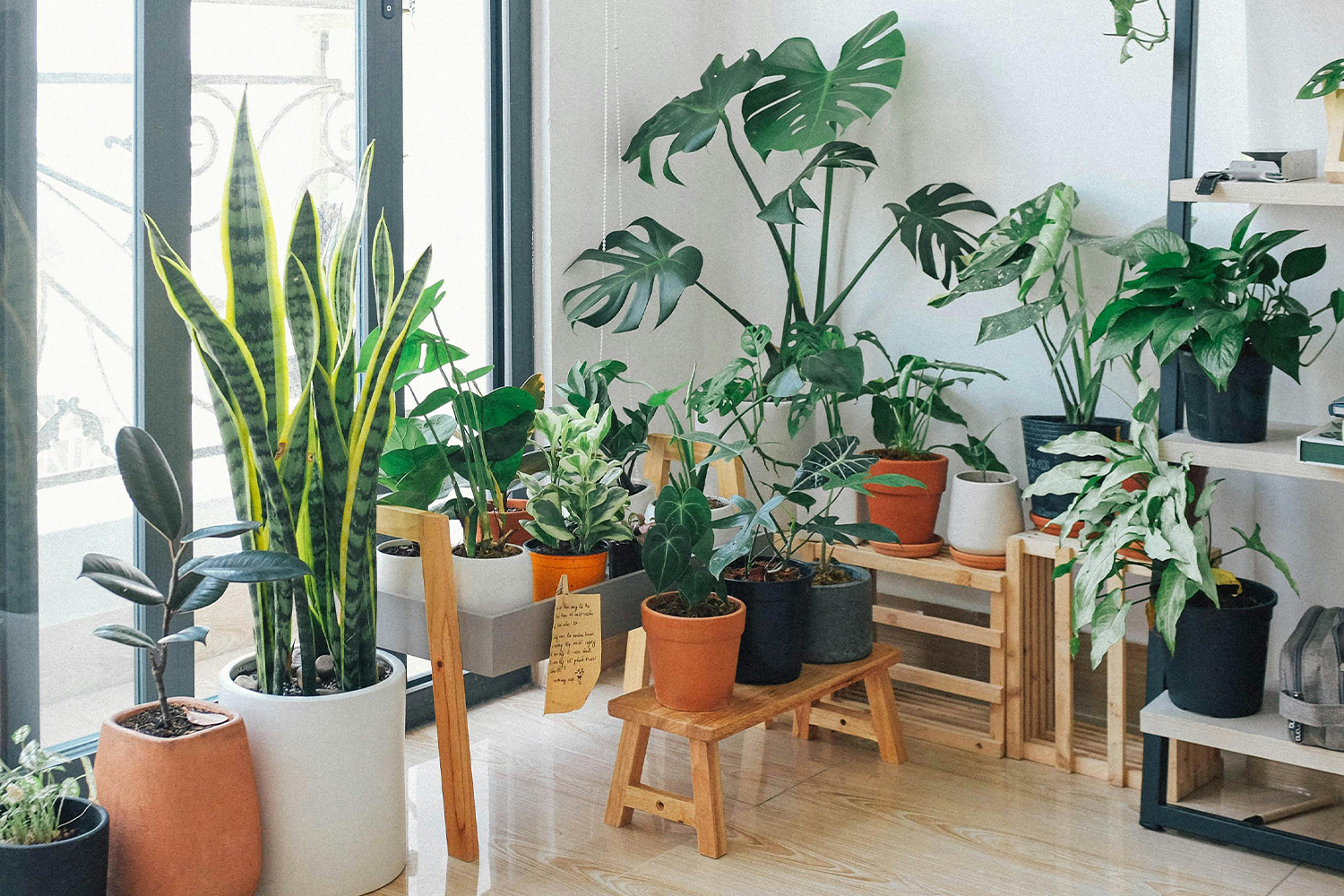
July 10, 2022
Houseplants bring coziness to both apartments and shared rooms, making them popular housewarming gifts. However, the duration of enjoyment from lush greenery can vary quite a bit. Fortunately, plant care can be learned, and to help you with this, we have compiled a few tips:

To provide adequate care, it's always helpful to know what type of plant you're dealing with. So don’t throw away the little information tags right after buying; feel free to Google where your new housemate is actually from. Understanding the conditions under which the plant thrives in nature helps develop a sense of what it might need. While "low water requirement" is inherently a vague statement, we can better understand what "low" means in the context of a desert cactus versus a yucca palm from the neotropical region. The cactus, for instance, will need even less watering compared to the yucca.
Most people immediately think about the importance of location. However, even plants that are suitable for shade or partial shade still require a good amount of brightness. This classification is mainly about the need for direct sunlight. Every meter that the plant is further away from the window can be crucial. Depending on the room, there might also simply be too little light penetrating in general for plants to thrive. So it doesn't necessarily have to be due to your green thumb. In some cases, you might just need to wait for the next move.
Many common houseplants originate from tropical regions and are therefore adapted to acidic soils. However, our tap water in Aachen is high in lime. When we use tap water for watering, lime accumulates in the soil over time, raising the pH level. As a result, the soil becomes less acidic, and the plants' nutrient uptake deteriorates. Those who have access to rainwater can use it effectively for watering. Additionally, using boiled tap water can help reduce some of the lime, which can be beneficial given Aachen's water hardness.
Almost no plant likes standing water. You can easily avoid this by not planting directly in a decorative pot but rather placing the plastic pot with holes (in which you bought the plant) inside the decorative pot. When repotting larger plants, it’s worth keeping the old plastic pots for this purpose. Additionally, you can create a small drainage layer at the bottom of the plastic pot using clay shards or expanded clay. If you buy plants from a garden center, this is usually already done, but plants from the supermarket often lack this bottom drainage layer.
You can make the best use of good drainage by conducting a check about half an hour to an hour after watering. Any water that remains in the decorative pot after you lift the inner plastic pot should be drained off. This helps prevent overwatering and standing water effectively.
Over time, dust and other deposits accumulate on the leaves of our plants, hindering gas exchange and UV absorption. It is therefore advisable to dust off the plants occasionally with cloths. However, a plant spa every few weeks can be even more effective than regular watering. To do this, place them in the shower without their decorative pots and give them a gentle rinse with lukewarm water. Not only will this wash away all the dirt from the leaves, but the high humidity in the bathroom will also be beneficial for most plants. After a few hours, the plants should be dry enough to move them back to their decorative pots in their designated spots.
It's worth taking a close look at your plants during your regular watering routine and checking for any small pests. Unfortunately, no pot or soil is completely immune to them. However, if you catch them early, you can use the right home remedies to prevent worse damage.
Fertilizer is often misunderstood as something used only when one wants plants to grow disproportionately fast. In reality, plants need food in addition to light and water. Especially when the soil is older and thus depleted, but also during growth phases (for many plants starting in spring), nutrient supply through fertilizer can help plants not only grow but also survive.
Wilting flowers and yellowing leaves often drain a lot of energy from plants. If there are still enough healthy leaves to carry out photosynthesis, it's better to remove the old remnants by pinching or cutting off the wilting parts right away.
Has the plant been thriving for a while now? If the roots start growing out of the soil, it’s definitely time to consider repotting. Over time, the roots can end up growing in circles and may not have any soil around them to absorb nutrients. However, repotting is only necessary once a year at most. You can easily find specific tips and tricks tailored to the type of plant online. Different species often benefit from various substrates, planting depths, and other factors.
With all this knowledge in a nutshell, we wish you much success and enjoyment in your home gardening! May your plants thrive, bloom, and have Christmas ornaments hanging from their sturdy branches.
Do you have an interesting topic you'd like to report on? Whether you're a professional or a beginner – we're always happy to welcome new people who want to share their exciting topics with us.
Here you can access our event calendar. Sign up directly via 'Anni'!
Copyright 2024 - AStA FH Aachen